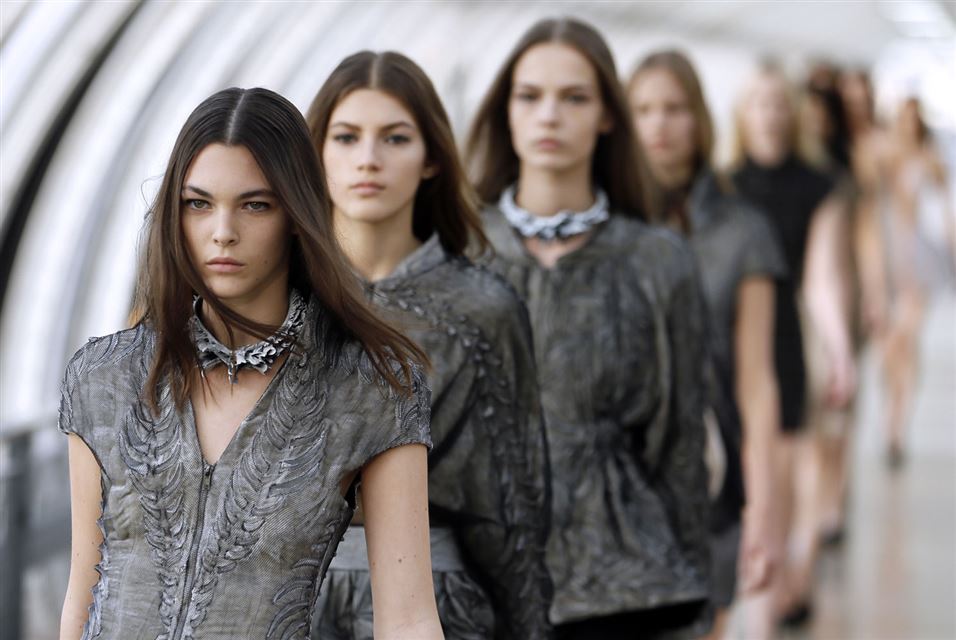Dutch fashion designer Iris van Herpen revealed 3D-printed garments and accessories “grown” with magnets during her ready-to-wear show in Paris two days ago. “Magnetic Motion” was the title of the Dutch designer’s Spring-Summer 2015 show and it was inspired by the Large Hadron Collider after she visited CERN (The world’s largest particle physics laboratory) in Switzerland earlier this year.
The high-concept presentation scored on subtlety and lightness, with materials ranging from silk and organza to leather to 3D silicone boning, and colors going from translucent to beige to black. What looked like appliqué flowers were actually silicone pins mimicking bursting particles, while armors and exoskeletons — themes that van Herpen has played with in the past — were softer here, almost caressing the hips instead of propping up the back. Meanwhile shoes, belts, necklaces and clutches were shaped by manipulating metal-infused materials with magnets, so no two are identical.
Particularly breathtaking were the translucent pieces at the end of the show, which were best described as wearable bodycon silicone sculptures, meant to represent invisible magnetic forces. For the record Iris did collaborated with several artists this season such as Canadian architect Philip Beesley who’s work combines advanced computing, synthetic biology and mechatronics engineering and Niccolò Casas for A 3D-printed transparent dress, as well as artist Jolan Van der Wiel who designed magnetic dresses with Van Herpen last year.
Iris van Herpen, with her penchant for pushing the boundaries between art, scientific experimentation, and clothing, is clearly one of the most exciting young designers in fashion today, and this collection benefited directly from her 2014 ANDAM Fashion Award win, which came with a cash prize of 250,000 euros. The delicateness of her collection is in innate defensiveness, and the contradiction is a perfect metaphor for what it means to be a woman in today’s culture. It is also exciting to see how quickly she has been able to distill some of her concepts into ready-to-wear collection and we can’t wait to see what else she comes up with next. (Text Teuku Ajie)

































